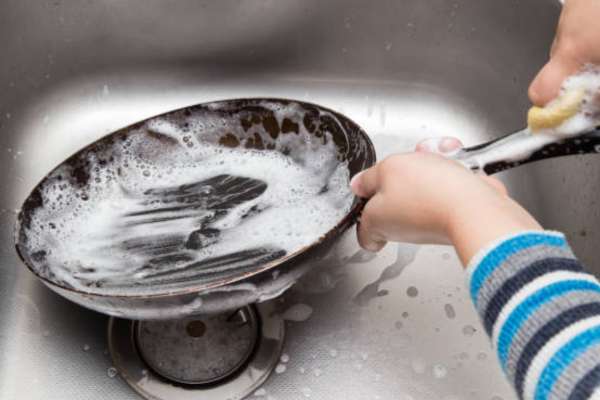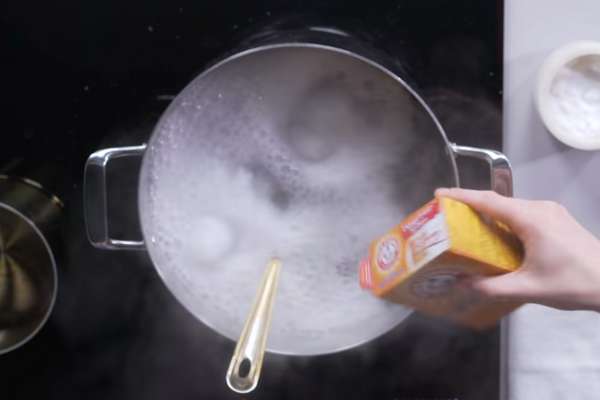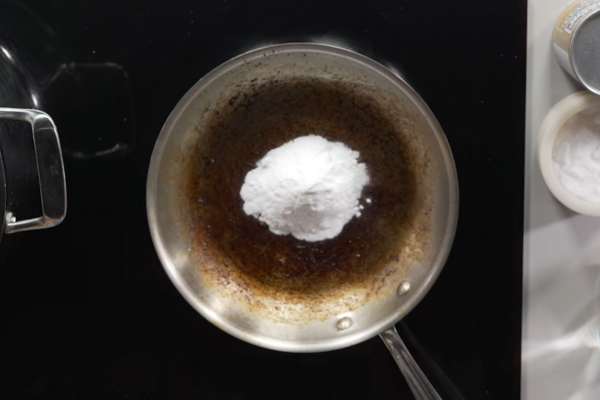Stainless steel cookware is a favorite in many kitchens, renowned for its durability, even heat distribution, and non-reactive nature that preserves the flavors of your favorite dishes. Keeping it looking pristine requires more than just a rinse with water. Over time, stainless steel can develop stains, discoloration, and stubborn burnt-on food that detracts from its appearance and performance. However, maintaining its shine and efficiency requires proper cleaning and care. In this guide, we will explore effective methods to clean and maintain your stainless steel cookware, tackling common issues such as stains, discoloration, and stubborn food residue.
Why Stainless Steel Cookware Requires Special Care
Stainless steel cooking utensil, while celebrated for its durability and sleek appearance, requires special care to maintain its optimal performance and aesthetics. Unlike other materials, stainless steel can be prone to discoloration, staining, and scratching if not handled properly. The metal’s resistance to corrosion and its non-reactive properties make it a favorite in kitchens. But these advantages also mean that it can show signs of wear more readily if exposed to high heat or abrasive cleaners. Proper care, including gentle cleaning methods and avoiding harsh chemicals, is essential to preserve its shine and ensure longevity.
Understanding Stainless Steel Cookware

Stainless steel cookware is a popular choice for kitchens worldwide, known for its exceptional durability, even heat distribution, and non-reactive properties. Made from a combination of metals, stainless steel resists corrosion and is ideal for a variety of cooking techniques.
Its non-reactive nature ensures that it won’t alter the taste or color of acidic foods, making it a versatile tool for home chefs. Despite its many benefits, this cookware is not without challenges. Common issues include staining from hard water, discoloration due to high heat, and food sticking to the surface.
Understanding these potential problems is key to effective maintenance, allowing you to keep this cookware looking and performing at its best.
Essential Cleaning Tools and Supplies
List Of Necessary Cleaning Tools:
- Soft Sponge
- Microfiber Cloth
- Nylon Scrubber
Cleaning Agents:
- Baking Soda
- White Vinegar
- Dish Soap
- Stainless Steel Cleaner
Emphasize avoiding abrasive tools and harsh chemicals that can damage the cookware.
Daily Cleaning Routine

Step 1: Cool down the cookware before cleaning.
Step 2: Rinse with warm water to remove loose food particles.
Step 3: Use dish soap and a soft sponge to clean the surface.
Step 4: Rinse thoroughly and dry immediately with a microfiber cloth to prevent water spots.
Removing Stubborn Stains and Discoloration

Method 1: Baking Soda Paste involves creating a simple yet powerful cleaning solution. Mix baking soda with a small amount of water to form a thick paste. Apply the paste directly to the stained areas of your cookware, using a soft sponge to gently scrub the surface. This technique helps lift away discoloration and residue without scratching the stainless steel.
Method 2: Vinegar Solution is another effective approach for removing heat stains. Boil a mixture of equal parts water and white vinegar in the affected cookware. The acidity of the vinegar helps break down stains caused by high temperatures. After boiling, let the solution cool, then rinse the cooking utensil thoroughly with warm water and dry it with a microfiber cloth. Both methods are gentle on your cookware and ensure it maintains its sleek, polished look.
Tackling Burnt Food Residue

Method 1: Soaking is a straightforward approach where you fill the cookware with warm, soapy water and let it soak for at least 30 minutes. This process helps loosen burnt food particles, making them easier to scrub away.
Method 2: Boiling Water and Baking Soda involves adding a few tablespoons of baking soda to the cookware and then filling it with water. Bring the mixture to a boil, allowing the baking soda to break down the burnt residues. Once cooled, use a soft sponge to scrub off the remaining residue.
Method 3: Using a Nylon Scrubber is ideal for tougher stains that persist despite soaking and boiling. Gently scrub the affected areas with a nylon scrubber, which is effective at removing stubborn residue without scratching the stainless steel surface.
Polishing
Polishing your stainless steel cooking utensil is crucial for maintaining its shine and overall appearance. To polish your cookware, you can use a specialized stainless steel cleaner or a homemade vinegar solution.
For the cleaner, apply a small amount to a soft cloth and rub it onto the cooking utensil in a circular motion. If you prefer a homemade solution, mix equal parts of white vinegar and water, apply it with a cloth, and then buff the surface gently. After applying the cleaner or vinegar solution, finish by buffing the cookware with a clean, dry microfiber cloth to achieve a polished, streak-free shine. This final step not only enhances the appearance but also helps protect the surface from future fingerprints and stains.
Preventive Measures for Maintaining
Avoid using excessively high heat, as this can cause discoloration and damage the cookware’s surface. Instead, use medium heat settings to cook your meals efficiently while preserving the cookware’s appearance. Secondly, always use the right utensils, such as wooden or silicone tools, to prevent scratching the stainless steel surface. Metal utensils can cause unsightly scratches and compromise the cookware’s finish. Lastly, implement regular maintenance practices, such as routine cleaning and polishing, to prevent buildup and maintain the cookware’s shine.
Common Mistakes to Avoid
Steer clear of using abrasive cleaners or steel wool, as these can scratch and damage the cookware’s surface. Instead, opt for non-abrasive sponges and mild cleaning agents. Second, never place hot cooking utensil directly into cold water, as the sudden temperature change can cause warping or damage. Allow your cookware to cool down gradually before cleaning. Lastly, avoid leaving food residue on the cooking utensil for extended periods, as this can lead to stubborn stains and discoloration. Regularly clean your cookware to prevent residue buildup and maintain its pristine appearance.
Conclusion
Proper care and maintenance are key to preserving the beauty and functionality of your stainless steel cooking utensil. By following the cleaning techniques and preventive measures outlined, you can effectively manage stains, avoid common mistakes, and keep your cookware looking like new. Regular cleaning, using the right tools, and avoiding high heat or abrasive materials will ensure that this cookware remains a durable and attractive part of your kitchen for years to come. Embrace these practices to enjoy optimal performance and a lasting shine.





